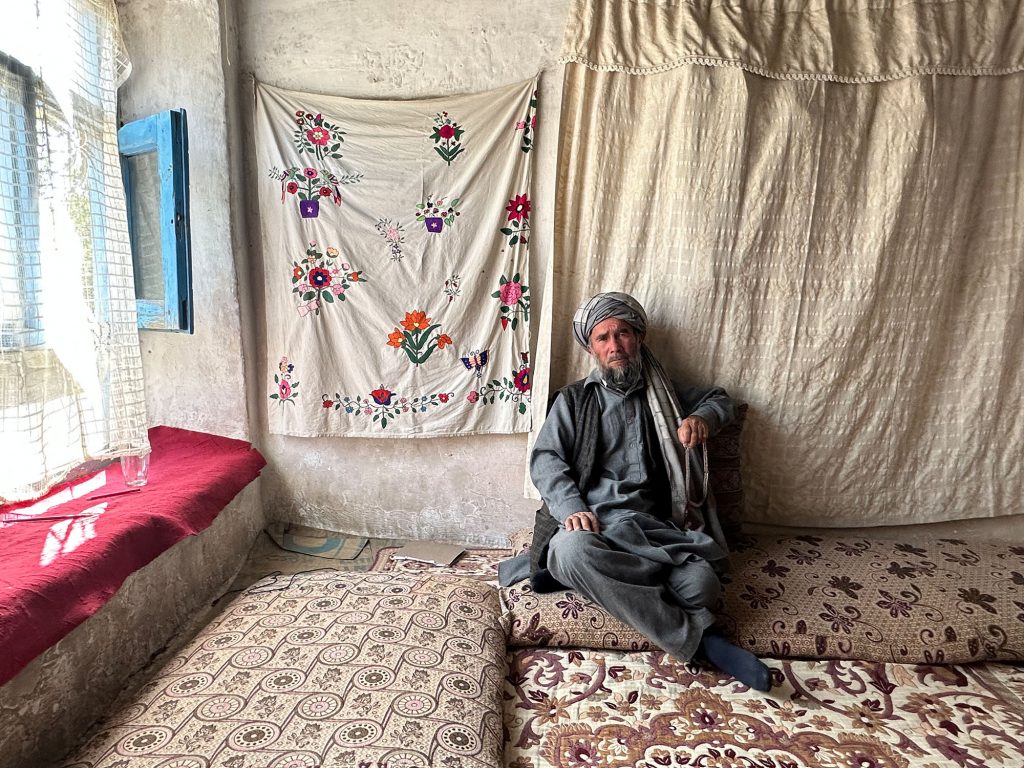Bamiyan is the first stop on our route through central Afghanistan. This crossroads of the Silk Road has countless natural beauties. UNESCO calls it a cultural landscape because it used to be an important Buddhist and cultural center of the entire country. To this day, it defies traditional ideas about Afghanistan, both with its picturesqueness and the extraordinary openness of the Shiite population. Even the carpets here have an atypical color.
On the road
The borrowed Toyota takes us relatively quickly on the paved road from Kabul over the 3,000-meter saddle of the Koh-i Baba mountain range (the western foothills of the Hindu Kush) to the Bamiyan valley. Families are currently harvesting grain, corn, potatoes, everything that has been grown in small fields. I notice the number of fruit trees in the well-kept orchards as well as a memento of the Soviet invasion in the form of rusting tanks as if lost in the mountain landscape.
The first tea invitation
In the city of Bamiyan, before we reach the complex cave system carved into the rock face by monks in ancient times, an elderly man in a turban welcomes us. He beckons us to follow and opens the door of his house a little. We appreciate his hospitality and this first ever invitation to tea! I don’t know if the Afghan family or we are more curious. Such moments with few words but with many smiles will remain in my memory.
To the clouds behind the looms
The greatest joy awaits me the next day. Mr. Alizada navigates our Land Cruiser up a steep hill above the city. Driving slowly, we cut sharp turns on the dirt road and behind each of them we discover more breathtaking views and scenery. It’s a completely different world! A straightforward world with mud houses where women weave carpets and men tend their flocks, fields or a small shop.
We are accompanied by the clatter of weaving tools across the open rafters. The tightly stretched warp dances under the fingers of the weavers, and its sounds remind me of a harp. I watch them work for long minutes and ask questions. I learn that there have been more women weaving carpets because the doors of high schools and universities have been closed to them for two years. In contrast, the support of international organizations is decreasing, people have to rely on themselves.
I am fascinated by the atypical blue-green color scheme and the traditional motif of the elaborate carpet. The weavers follow the pattern with the usual movements, on which each field means one double knot. The color and quality of the carpet are indicated. There is no room for imagination. Weaving carpets is demanding work, which is why women devote a maximum of 6 hours a day to it. That way they will have enough time for work around the house. Mr. Alizada shows me large sacks of local wool. It is of excellent quality, so other provinces also supply it.
Anyone who would think that the weavers have a pile of carpets for sale in the next room is wrong. After about two months of work, it will be taken off the loom and the unwashed, untrimmed carpet will be moved to a bigger city. In another 15-20 days, the finished piece can be handed over to the customer.
Full of impressions, we leave the place “in the clouds” with the beautiful name Zargaran – Land of Jewels and continue our journey to the west.
PS: Many thanks to Jirka Weinzettl, my companion and mahram, for all the copyrighted photo and video documentation.














